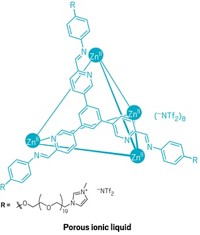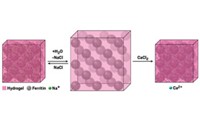Advertisement
Grab your lab coat. Let's get started
Welcome!
Welcome!
Create an account below to get 6 C&EN articles per month, receive newsletters and more - all free.
It seems this is your first time logging in online. Please enter the following information to continue.
As an ACS member you automatically get access to this site. All we need is few more details to create your reading experience.
Not you? Sign in with a different account.
Not you? Sign in with a different account.
ERROR 1
ERROR 1
ERROR 2
ERROR 2
ERROR 2
ERROR 2
ERROR 2
Password and Confirm password must match.
If you have an ACS member number, please enter it here so we can link this account to your membership. (optional)
ERROR 2
ACS values your privacy. By submitting your information, you are gaining access to C&EN and subscribing to our weekly newsletter. We use the information you provide to make your reading experience better, and we will never sell your data to third party members.
Environment
Dipeptide Crystals For Gas Storage
Nanochannels that form in biomolecular crystals may be useful for separating, purifying, and storing CH4, H2, and CO2
by Rachel A. Petkewich
December 22, 2008
| A version of this story appeared in
Volume 86, Issue 51

Nanochannels that form in biomolecular crystals may be useful for separating, purifying, and storing gases such as methane, hydrogen, and carbon dioxide under mild conditions, according to Piero Sozzani and colleagues at the University of Milano Bicocca, in Italy (Chem. Commun., DOI: 10.1039/b820200a). Researchers have proposed numerous porous materials for gas storage, but many of these materials require unfavorable synthesis conditions, contain heavy-metal ions, or are not biodegradable. Sozzani and coworkers prepared four dipeptides that crystallize with chiral channels suitable for encapsulating gases. A network of hydrogen bonds holds the peptides together, creating the permanent channels with hydrophobic internal surfaces. The researchers found that the channels in a dipeptide crystal composed of isoleucine and valine, for example, can hold as many moles of CH4 as H2 and selectively absorbs CO2 over CH4. They further noted that some of the dipeptides tested had better capacity for CH4 than other porous materials such as zeolites and certain metal-organic frameworks. With the variety of peptides that are available, the nanochannels could be customized to fit specific gases, Sozzani says.




Join the conversation
Contact the reporter
Submit a Letter to the Editor for publication
Engage with us on Twitter